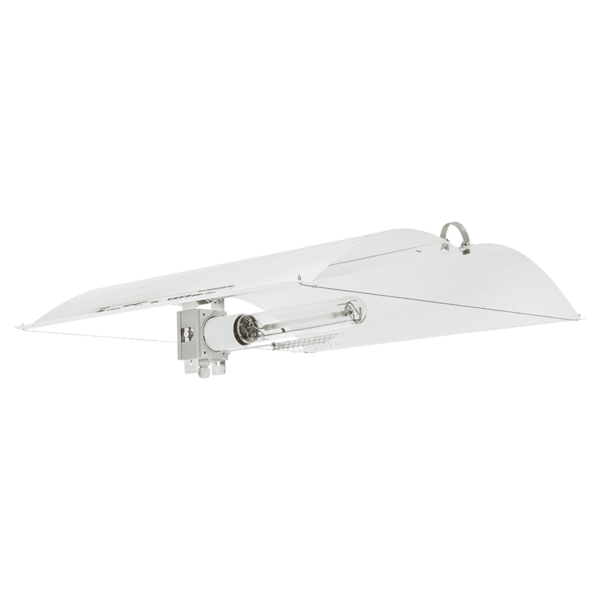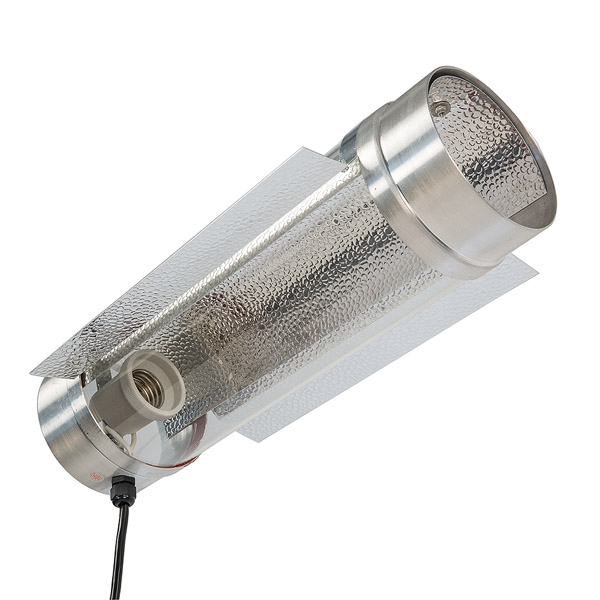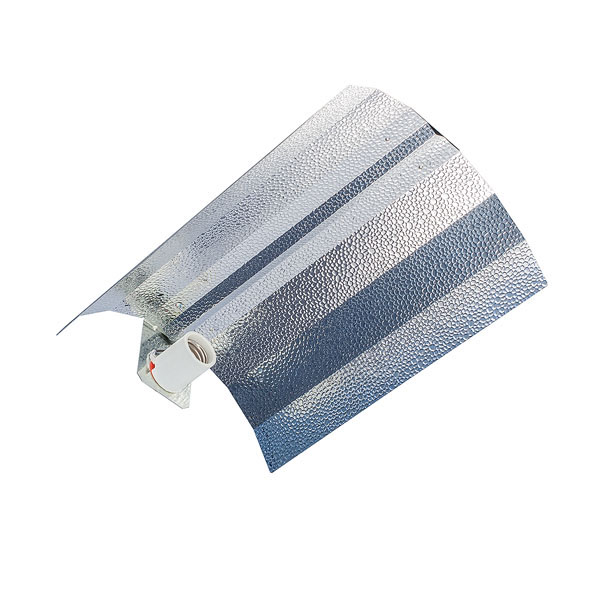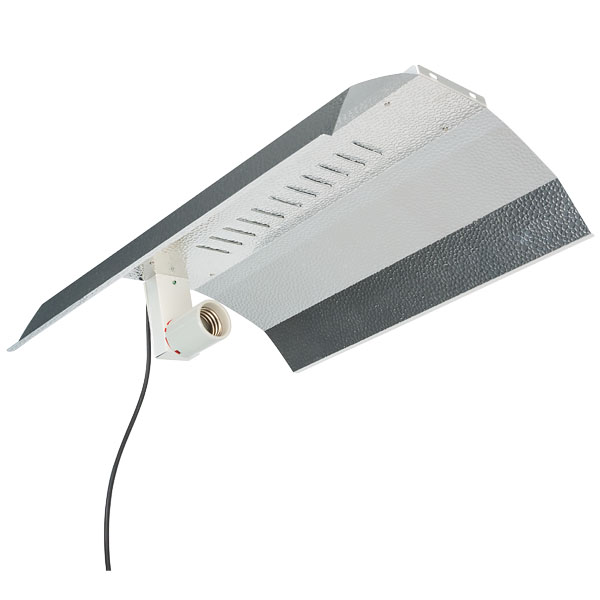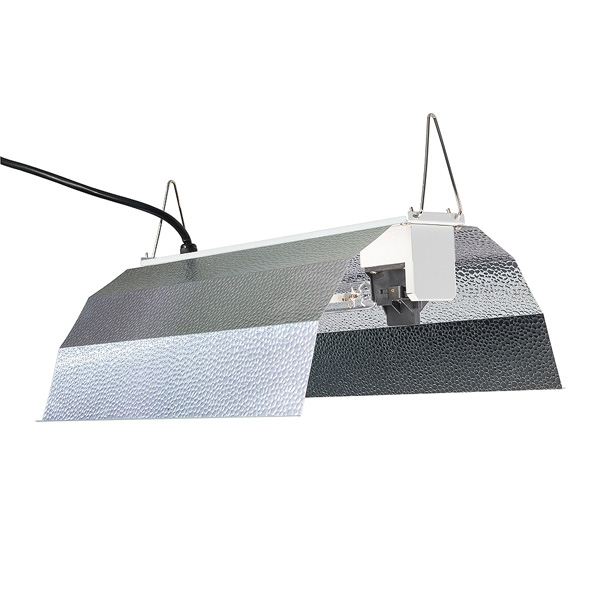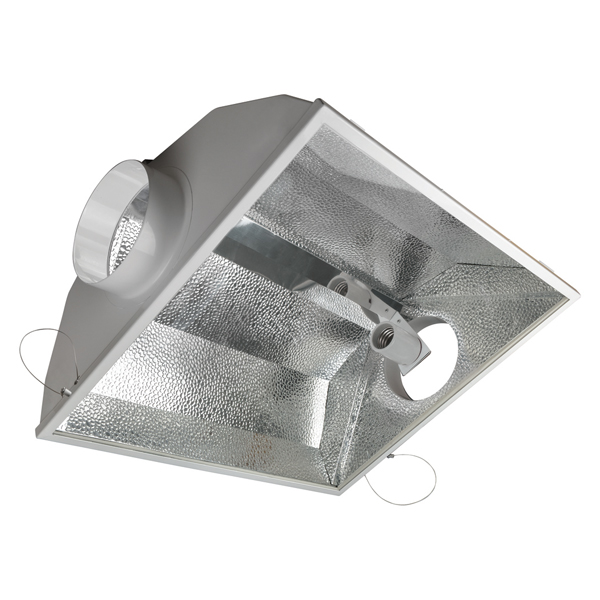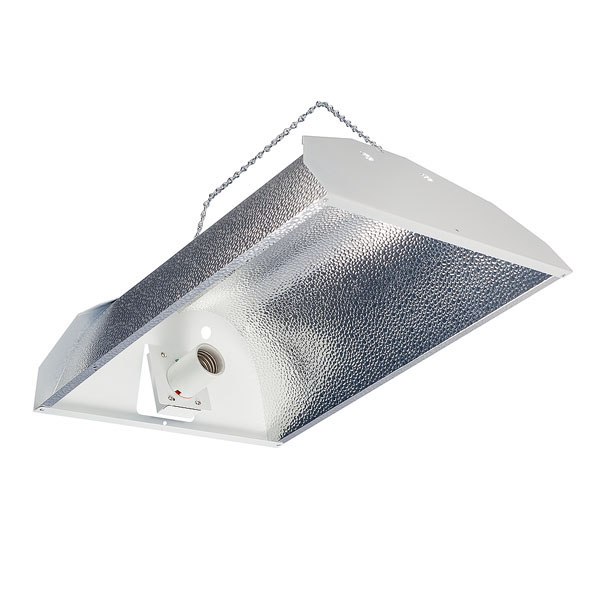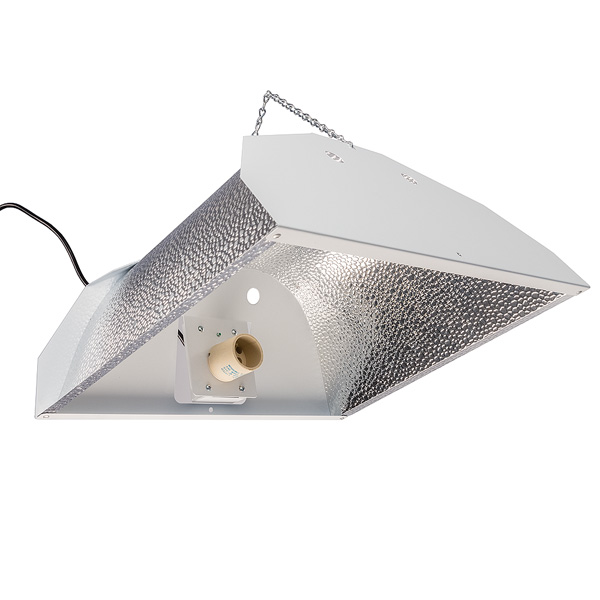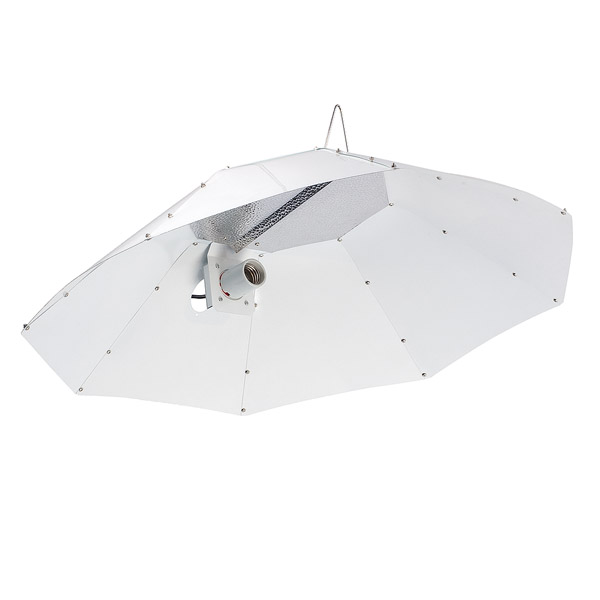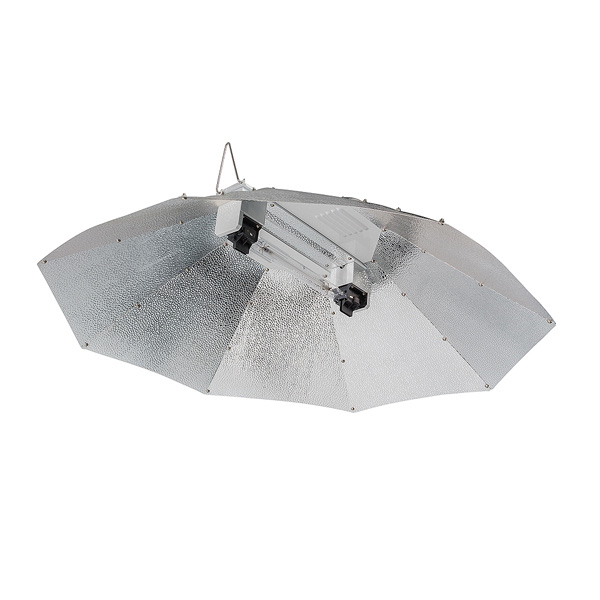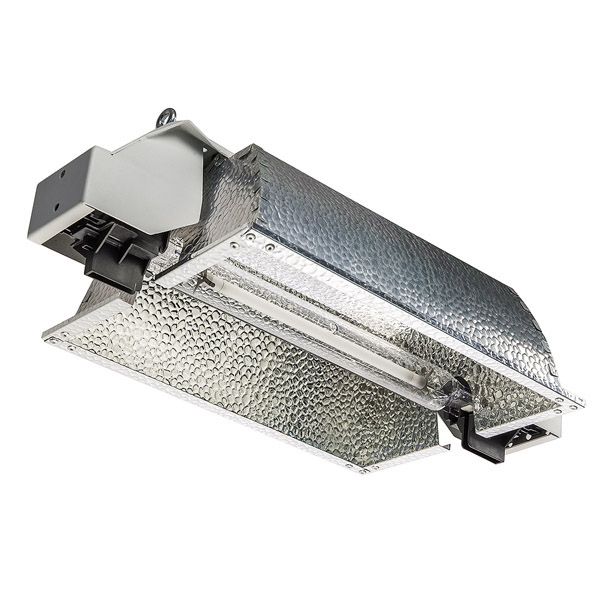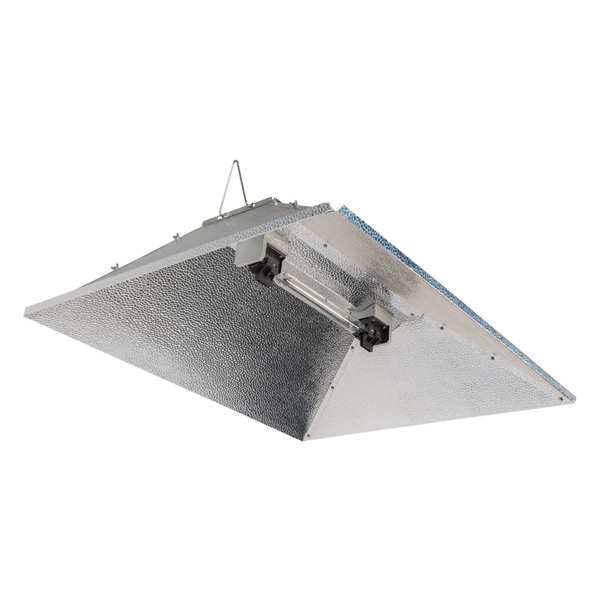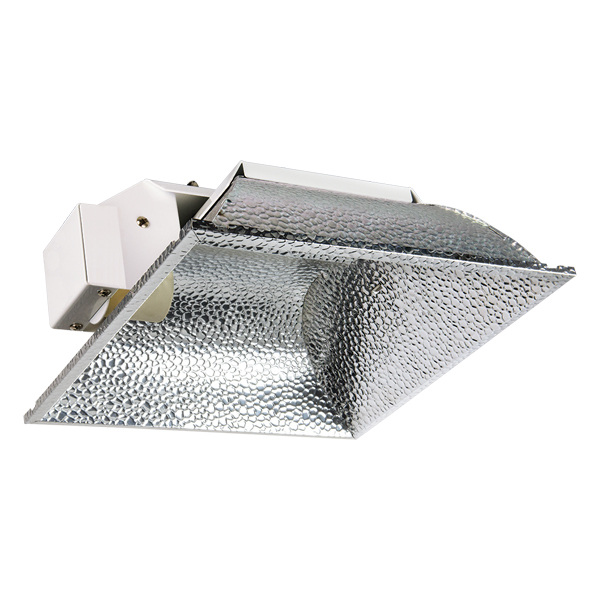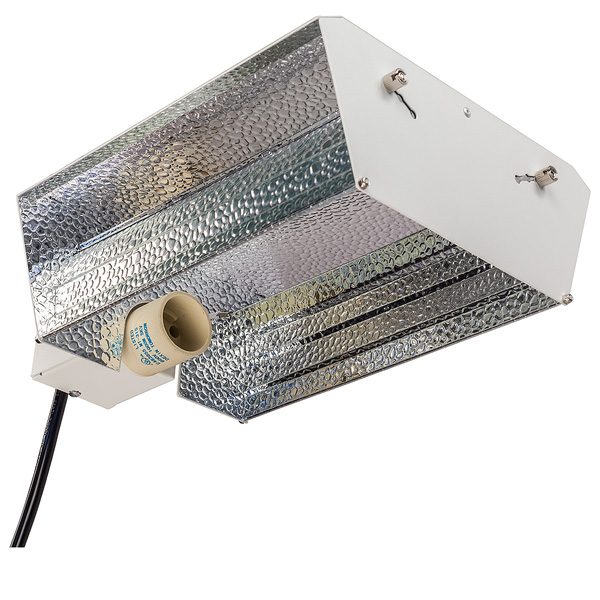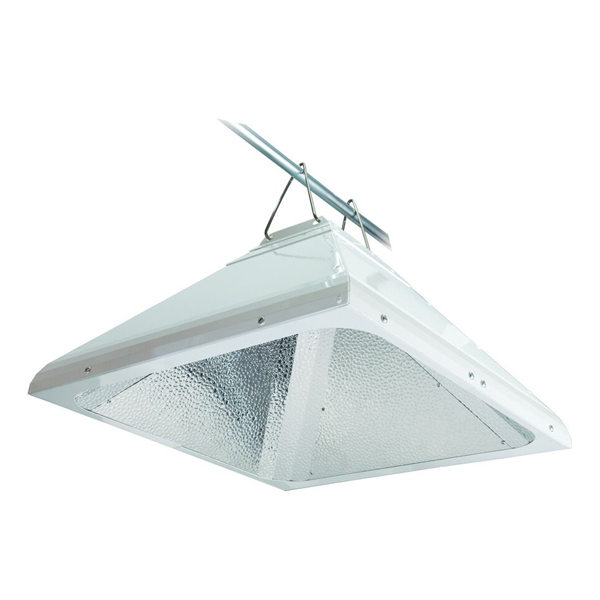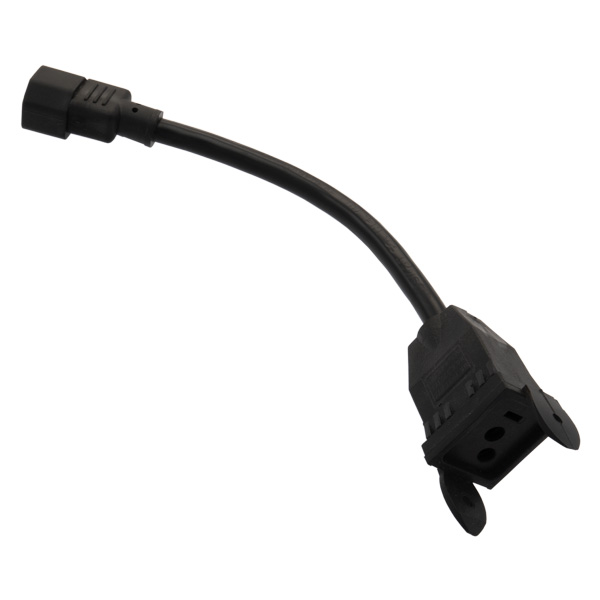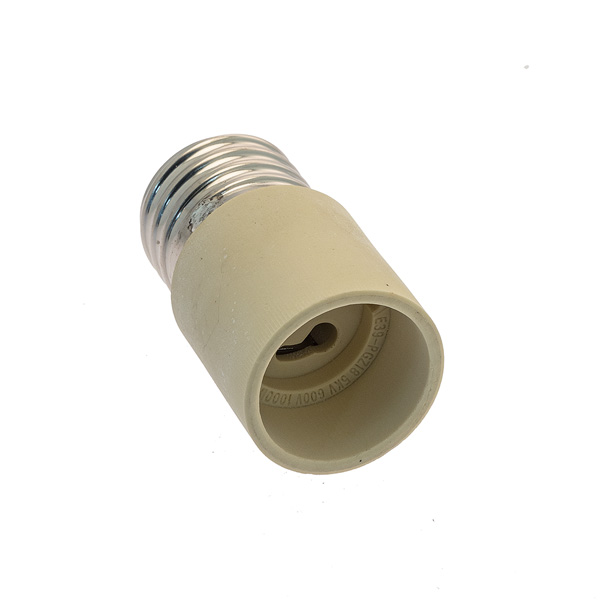So, which type of reflector do I need for my indoor hydroponic garden? Letʼs start with the important job the reflector has to do; simply to concentrate the light you are using over the plant canopy. A professional reflector has been designed to spread light evenly and intensely over the growing space giving uniform growth and higher yields. The types of reflectors we recommend are the closed ended variety as they are the best at focusing the light downwards.
They do however need good air movement around them and may not be the best for growing in confined spaces as the heat from the lamps can become trapped inside them unless there is sufficient space around the outside of the reflector for the warm air to escape.
If you are growing in a small space then the open ended variety maybe a better choice as they allow the heat to escape from the sides of the reflector. Air cooled reflectors are a good choice as the heat from the lamps is removed using an extractor fan. This means that the reflector can be brought closer to the plants without burning a great advantage as most indoor growers are constantly removing excess heat. These types of reflectors, offer the benefit of increased light levels to your plants.
The job of the reflector in your lighting system cannot be under emphasised, making best use of the light your lamp produces adds available light to your plants whilst ensuring all the light emitted is distributed as evenly as possible. HID lamps are designed to run in a horizontal position with equal emission from all surfaces of the lamp. Light emitted from the further section of the lamp away form the plants needs to be diverted effectively to your canopy. Highly polished hammertoe aluminium or MIRO dimpled mirrored surfaces direct this light to your garden. Along with computer aided design from some of the worlds most renowned manufacturers such as Sunlight Supply Sun Systems, Maxibright and SOL digital. Progrow have based their choice of reflector on their own lighting research conducted to show intensity and distribution from industry standard reflectors. A particular noted surprise form our own testing was how well more affordable reflectors performed, particularly the Supernova reflector. The reflective surfaces of these reflectors will degrade with use, as such care in their use and handling is important, you should try to not touch the reflector surface and lightly clean them when appropriate. Consideration should be given to the varying positions your reflector is likely to be in as your plants grow and how far away your ballast is positioned. Most ballasts are provided with plenty of cable to enable the ballast to be positioned outside the grow room.
A question we are regularly asked and one the answer to will help you determine the above mentioned position of your reflector is “How far way should i position my reflector from the top of my canopy?” The following distances will give you the best balance and spread of light over the plant canopy and penetration of light into the plant canopy.
Ideal coverage for 250w: 0.5m x 0.5m at 25-30cm above plants.
Ideal coverage for 400w: 0.8m x 0.8m at 40-45cm above plants.
Ideal coverage for 600w: 1m x 1m at 45-50cm above plants.
Ideal coverage for 1000w: 1.2m x 1.2m at 65-70cm above plants.
If you move your lights closer than this always check that the temperature around the tops of the plants is no more than 25-28 degrees C Growers who use air cooled lights can get them closer than this without fear of burning the plants. A small adjustment in lamp height makes a big difference to the amount of light the plant is receiving. To fully understand this we recommend having an
understanding of the ‘inverse square lawʼ, which explained briefly here, means that the light energy twice as far from the source is spread over four times the area, hence one-fourth the intensity. In a nutshell, light fades very fast indeed so keeping them as close as possible without burning the plants is the name of the game. Most indoor Hydroponic gardeners will use the same reflector throughout their individual room, with the exception of maybe a larger reflector such as the Parabolic reflector which is able to distribute light over a greater area to mix a more favourable photosynthetically active radiation profile to your plants. Gavita mix light in this way with their Gavita Pro 270e LEP (Plasma) Supplemental Spectrum lighting system you can find in our Digital lighting section, Gavitaʼs
excellent reflectors are built into the electronic ballast as a single fitting. If you are intending to use air cooled lighting careful consideration should be given to the extra ventilation equipment needed and more specifically position of the ducting into and out of your grow room or tent. Hydroponic grow tents make the job relatively easy for you most providing adjustable ports for your ducting. How much ventilation am i likely to need? Well if we take a 600 watt high pressure sodium air cooled reflector Progrowʼs recommendation would be to use an RVK 125 mm a extractor fan pulling fresh air from outside the grow area. Larger air-cooled reflector set ups run the risk of becoming complicated meaning in our opinion air cooled reflectors are best utilised from single fixture grow rooms up to x12 1000w fixtures. Our Reflector Category also contains reflectors for 315 watt Ceramic Metal Halide lamps such as the Superbright CDM reflector and also reflectors specifically for use with Double Ended 1000w lamps.

